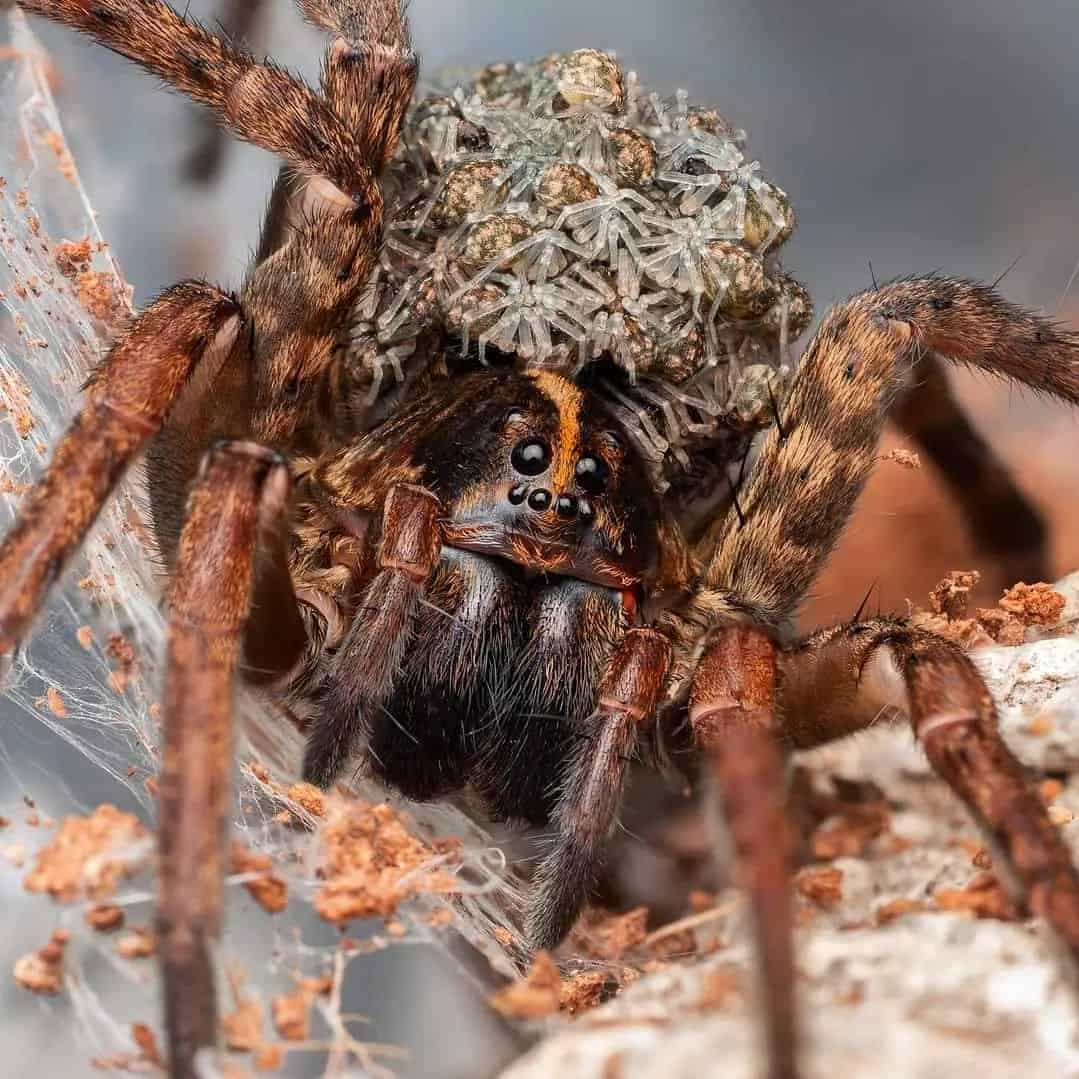The rainforests of Africa, a treasure trove of biodiversity, boast an astonishing variety of flora and fauna. Within these lush habitats, birds emerge as the most vibrant and diverse inhabitants. This article delves into the captivating world of rainforest birds, weaving their splendor into the rich tapestry of African ecosystems.
List of Birds of the African Rainforests
African Grey Parrot
The African Grey Parrot, an iconic and intelligent species native to West and Central Africa’s dense rainforests captures attention with its remarkable mimicking abilities. Renowned for their cognitive prowess, these birds, often kept as pets, face threats due to habitat loss and the illegal pet trade. African greys, frugivores feasting on fruits, nuts, and seeds, maintain monogamous bonds, with pairs typically mating for life.

Great Blue Turaco
The Great Blue Turaco, a strikingly beautiful bird, adorns the rainforest canopy with its deep teal-colored plumage. Found in central and western Africa, these social birds, forming small flocks, play a crucial role in seed dispersal by subsisting on a diet of fruits, flowers, and leaves.

African Crowned Eagle
The African Crowned Eagle, among Africa’s largest and most powerful raptors, commands attention with its impressive size and hunting prowess. Inhabiting rainforests and dense woodlands, these bold and territorial eagles primarily target medium-sized mammals. Unfortunately, the species faces a decline in population due to deforestation.

Congo Peafowl
Endemic to the Congo Basin rainforest, the Congo Peafowl, the sole African peafowl species, adds a touch of mystique to lowland forests. Despite its less flamboyant appearance compared to Asiatic cousins, the males, with deep-blue plumage, are omnivores feeding on fruits, insects, and other invertebrates. Populations are dwindling due to hunting and habitat loss.

African Pitta
Known for vibrant plumage and explosive calls, the African Pitta, a small passerine bird, resides in the understory of Central and West African rainforests. Despite their bold appearance, these elusive birds forage leaf litter for insects and invertebrates, adding a splash of color to the forest floor.

Picarthartes Rockfowls
In the dense rainforests of tropical West and Central Africa, the Picarthartes Rockfowls, also known as bald crows, captivate bird enthusiasts and researchers alike. With slender bodies, large beady eyes, featherless heads, and brightly colored facial skin, these ground-dwelling birds, threatened by habitat destruction, feed on insects and invertebrates in damp, rocky habitats.

As we navigate the rich tapestry of Africa’s rainforests, these avian wonders symbolize nature’s diversity and the delicate balance we must preserve for future generations.
Copper-tailed Starling:
The Copper-tailed Starling, adorned with dazzling copper-colored feathers, is a captivating sight in West African lowland forests. Classified as “near-threatened,” this species forages for insects and fruit in the forest canopy, facing the constant threat of habitat loss.

African Green Broadbill:
Also known as Grauer’s Broadbill, this rainforest gem sports a striking plumage that effortlessly blends with its verdant habitat. Found in the montane forests of the Albertine Rift, it faces habitat loss due to deforestation, putting its existence in jeopardy.

Prigorgine’s Sunbird:
Endemic to the Marungu Highlands, Prigorgine’s Sunbird boasts colorful males and drab brown females. These sunbirds, found in montane forests, are threatened by deforestation and habitat degradation.

White-crested Tiger Heron:
Inhabiting West African lowland forests, wetlands, and mangroves, the White-crested Tiger Heron is a stout bird with a piscivorous diet. Its existence is under pressure from ongoing habitat destruction.

Vermiculated Fishing Owl:
Endemic to West-Central Africa, this large owl with heavily patterned plumage hunts nocturnally. Deforestation threatens its well-hidden roosting sites, emphasizing the urgent need for conservation.

Congo Serpent Eagle:
Specializing in hunting snakes in African rainforests, the Congo Serpent Eagle’s dark plumage helps it camouflage. Found in West and Central Africa, this vocal species faces habitat loss due to deforestation.

Cassin’s Hawk-Eagle:
A small booted eagle, Cassin’s Hawk-Eagle preys on tree squirrels and small birds in rainforests across West, Central, and East Africa. Its resemblance to the Congo Serpent Eagle is attributed to mimicry.

Black-collared Lovebird:
Also known as Swindern’s Lovebird, this parrot thrives in equatorial African rainforests. Despite its widespread distribution, habitat destruction threatens its existence in certain areas.

Chocolate-backed Kingfisher:
Contrary to its name, this kingfisher species isn’t piscivorous. Inhabiting lowland rainforests, it relies on insects for sustenance. Conservation efforts are crucial to protect its unique habitat.

Black-casqued Hornbill:
Widespread across tropical rainforests, the Black-casqued Hornbill stands out with its casqued bill and distinctive feathered hoods. Found in pairs or small flocks, these intelligent birds feed on fruit and insects.

Red-bellied Paradise Flycatcher:
Common in tropical African forests, this flycatcher’s rusty red belly sets it apart. Its energetic presence and sharp calls contribute to the lively ambiance of West and Central African rainforests.

Yellow-bellied Wattle Eye:
A tiny, colorful bird found in the rainforests of West, Central, and East Africa, the Yellow-bellied Wattle Eye relies on the dense understory for foraging. Its distinctive appearance includes blue or green eye wattles.

Tiny Sunbird:
The smallest of the Cinnyris genus, the Tiny Sunbird’s bright colors and distinct markings make it a fascinating rainforest resident. Found in forests, clearings, and even villages, conservation efforts are essential for its survival.

Afep Pigeon:
Also known as the African Wood Pigeon, this large gray pigeon is a common sight in equatorial African rainforests. Feeding on seeds and grains emphasizes the need for preserving its habitat.

Sabine’s Puffback:
Native to West and Central African rainforests, Sabine’s Puffback is a large-billed species feeding on insects. Recognizable by its large bill and unique whistling songs, it faces threats from habitat loss.

Final Thoughts
As we marvel at the diverse avian wonders of African rainforests, it’s crucial to recognize the imminent threats they face. Deforestation, habitat loss, and climate change are jeopardizing these species. Urgent conservation measures are essential to safeguard these unique birds and preserve the rich biodiversity that defines Africa’s majestic rainforest ecosystems. Only through collective efforts can we ensure that these avian wonders continue to enchant and contribute to the ecological balance of their habitats.





![Colorful Jungle Birds of Amazon Rainforest [Images + IDs]](https://birdsology.com/wp-content/uploads/2023/05/51790950388_86c02ac899_b-600x400.jpg)
